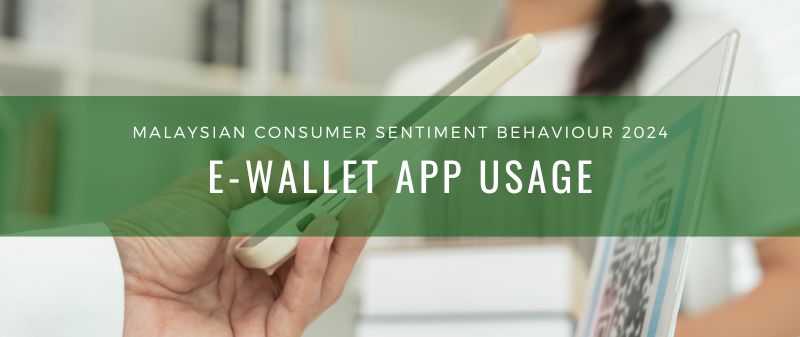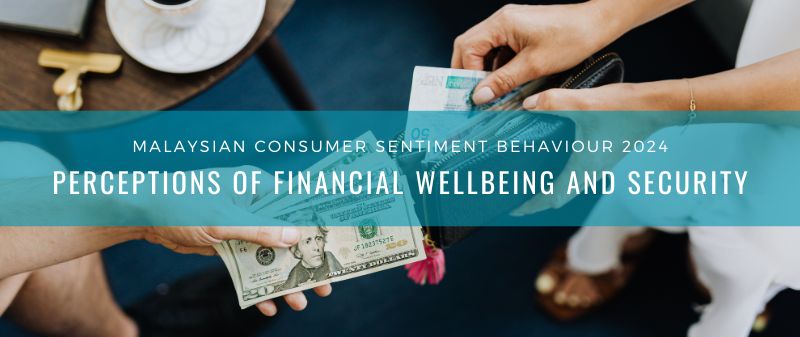May 23, 2024 10:56AM
Malaysian Consumer Sentiment Behaviour 2024: E-wallet App Usage

Digital payments and e-wallet applications have become dominant in today's transactions. This article explores Malaysians' preferences for various e-wallet apps, the payment methods used for different categories of products and services, and their attitudes towards e-wallet applications. As Malaysians increasingly adopt cashless transactions and e-wallets integrate with more vendors and services, this trend is expected to grow in the coming years.
Methodology
This survey was conducted from 23rd February to 11th March 2024 using Vodus’ proprietary OMTOS online survey method that enables a survey audience sampling reach of 17 million Malaysians (53% of population) through a network of major online media platforms. In total, Vodus has surveyed 2521 Malaysians nationwide to gather data and insights that accurately represent the general population.
Preferences in E-wallet Applications:
In today's era of digital transformation, traditional payment methods such as debit cards, credit cards, and cash are being challenged by a variety of digital applications. From mobile banking, peer-to-peer transactions to contactless payments, these apps offer unparalleled convenience and accessibility, fundamentally reshaping how we manage our finances. As smartphones and the internet become widespread, the shift towards digital payments is undeniable, fundamentally altering the landscape of monetary transactions.
Chart 1: Preferred E-wallet Application
Given its widespread acceptance in sectors ranging from public transport to highway tolls, coupled with its extensive network of retail merchants, it's no surprise that the Touch 'n Go wallet is the top choice among Malaysian consumers for e-wallets. Our study found that 62% of Malaysian consumers preferred using the Touch 'n Go wallet over other e-wallets.
Our study found that the majority of Touch ‘n Go E-wallet users are predominantly males aged 25–34 years old, primarily of Chinese ethnicity, and have an income range between RM3,000 to RM10,000. This wide income gap indicates that TnG has been adopted by Malaysians from a broad range of income levels.
In contrast, consumers aged 45 and above (22%), other ethnicities (21%), and earners of more than RM10,000 (23%) tend to prefer apps developed by banking institutions such as MAE by Maybank2U and CIMB Clicks by CIMB. Meanwhile, consumers aged between 18–24 years old (22%) and those earning less than RM1,500 (20%) prefer to use ShopeePay as their first choice of e-wallet apps.
Preferred Payment Method Across Products/Services:
The way we pay for goods and services has undergone a remarkable transformation over the past few years, offering a wide range of options to consumers in Malaysia across various sectors. From the comfort of online shopping to the convenience of ordering food online, managing bills, and even topping up petrol or charging electric vehicles, the range of payment methods has expanded to cater to diverse needs.
Chart 2: Preferred payment method across products/services.
E-wallet payment methods have become highly preferred among consumers for a variety of products and services due to their convenience and security. The widespread adoption of e-wallets is evident across multiple categories, with 52% of consumers using them for online shopping, 48% for online food delivery, 45% for mobile telco reloads and data, 43% for utility bills, 43% for public transportation, 36% for amenities such as gym memberships and parking, and 32% for retail stores and supermarkets. This trend highlights the growing reliance on e-wallets for everyday transactions, making them a popular choice among users.
However, there are notable exceptions where alternative payment methods remain prevalent. Cash remains the preferred option for transactions involving petrol (34%), EV charging (34%), clinics and pharmacies (37%), and restaurant payments (34%), reflecting a preference for tangible currency in certain contexts.
Additionally, debit cards are favoured for transactions at hotels, providing a familiar and straightforward payment solution for travellers. When it comes to credit card usage, our study found that credit cards were the least preferred payment method across all options, with their most preferred use being for hotel payments (19%) and petrol/EV charging (17%).
Despite the dominance of e-wallets in many areas, the persistence of various payment methods highlights the importance of catering to diverse consumer preferences across different industries.
With a significant portion of the population embracing e-wallets and demonstrating a preference for cashless transactions, integrating these payment methods into business operations can enhance customer satisfaction and streamline the purchasing experience. By catering to the preferences of tech-savvy consumers who value convenience and security, businesses can tap into a growing market and stay competitive in the evolving landscape of digital commerce.
Attitudes Towards E-wallets Payment:
The e-wallet payment method has gained widespread acceptance among Malaysians, with the majority regarding it as the preferred and most convenient option for conducting financial transactions. This popularity stems from its ease of use and broad acceptance by a wide network of merchants and service providers. However, despite its convenience, safety concerns have emerged as a significant issue. Only two out of three Malaysians (66%) feel secure keeping their money in e-wallets, indicating a notable level of apprehension among users. Additionally, one in four Malaysians (24%) remain undecided on this matter, suggesting a need for greater reassurance regarding the security measures implemented by e-wallet providers.
Chart 3: Preferred payment method across products/services.
Interestingly, a closer examination of demographics reveals that certain groups exhibit more uniform opinions on e-wallets. The majority of Touch 'n Go users, individuals aged 25 to 34, and those belonging to the T20 income bracket agree across all statements regarding e-wallets. This suggests a correlation between usage patterns, age, and income level with perceptions of e-wallet convenience and safety. These insights underscore the importance of addressing safety concerns and implementing measures to enhance trust among all segments of the population, ensuring the continued growth and adoption of e-wallets in Malaysia.
For more info on our state-level and demographic deep dive analysis, or if you want to know more about our proprietary OMTOS survey technology, please contact us in the form below or email us at contact@vodus.com.













